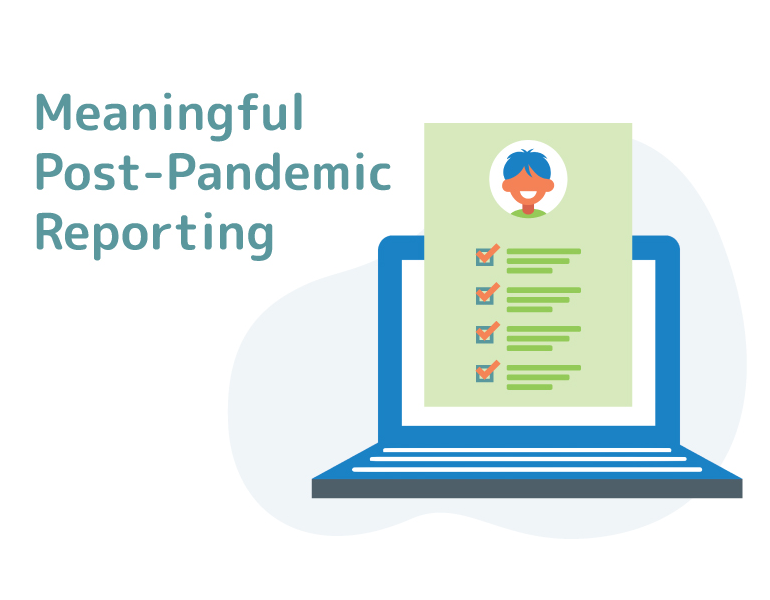
After all we’ve been through over the past few months, a conventional mid-year report doesn’t seem fair for students or teachers. No surprise then that many schools are de-emphasizing grades, or leaving them out entirely.
But students still want to know where they sit, and their parents do too. After the confusion of home-learning, a meaningful snapshot of student progress is more needed than ever.
So how do we deliver meaningful reporting when our students have spent most of the year out of class and As, Bs, and Cs can no longer do the talking?
Here are 4 strategies for meaningful post-pandemic reporting.
Hone your comments
With grades taking a backseat, it’s up to your words to paint a detailed picture of student progress.
Your comments should include:
- Acknowledgment of something students have done well
- (Crucially this year) Feedback on student engagement with remote learning
- Feedback on an area that needs improvement
- Suggested strategies for future progress.
Use the following example as a guide:
Ava’s effort and diligence throughout the challenges of remote learning have been a pleasure to witness. Her skills have improved considerably in the areas of _ and _ owing to this dedication. There is still more to be done in terms of _, where Ava has experienced_. With this in mind, I encourage Ava to pursue [strategies for improvement]. Overall, Ava has emerged from Semester 1 with a solid grounding in [the subject], and I look forward to seeing her continued improvement in the latter half of the year.
Even if your school doesn’t use report comments, observations of this structure come in handy for parent-teacher interviews.
Incorporate self-reflection
You might be wondering how you’re supposed to do the above when you’ve barely seen your students all year.
This makes self-reflection more important than ever because only students can tell you what they have and haven’t learned.
You could try an online survey, questionnaire, or a more free-form written reflection. You can also give students a copy of relevant rubrics so they can self-assess against specific criteria.
Whichever option you choose, make sure you model the process first. Show them what it means to use reflective language and encourage honesty. Taking them through an exemplar can be a big help.
You might use the following questions, adapted to suit your students’ level:
- What successes are you most proud of this semester?
- Which areas are you most confident in?
- Which areas need some extra work?
- What are you hoping to improve upon next semester?
- What was challenging this semester?
Note: for younger students, it can help to transform these into more direct prompts (e.g. “Identify 3 things…”). Older students can use more open-ended questions.
Collect your students’ reflections and use them to scaffold your report comments. They’ll be more meaningful having come from the source.
Don’t forget about the data
As we’re so often reminded, our students’ parents want to see the numbers. Often our students do too. And while we might lament the attachment to grades and numbers, they’re usually remembered long after our comments have been forgotten.
If you’re waiving grades or lacking data for the first half of the year, you can still quantify things such as:
- number of homework activities completed
- trends in progress
- specific assessment results
- number of questions asked or contact points during home learning
- the number of lessons where a student displayed positive behaviour.
Incorporating this data will leave students and parents with a confident knowledge of just how much progress has been achieved.
Leverage data tracking educational programs
Besides being an engaging formative assessment strategy, certain learning programs can give you all the data you need for meaningful reporting. For example, Mathletics and Reading Eggs allow you to see at a glance:
- How many homework assignments a student has completed over a set period of time
- The number of lessons successfully completed
- Progress trends, via results across a span of time
- How student results compare to those of their peers
- Results in specific curriculum areas.
Some programs also give automated rewards when students reach a progress milestone. Mathletics, for example, awards students with certificates when they attain 1000 in-game points or more. Reference these in your comments, or even email them home alongside the report. Doing so will transform your reports from formalities into statements of learning parents and students can celebrate together. It’s the best feedback for them, and the best reflection on you.










